Name: Cytokeratin 17 Monoclonal Antibody clone EP98
Description and aplications: The widely known intermediate filaments proteins, which measure between 7 and 22 nm diameter (that is, a size between the one of the actin -5-7 nm and the tubulin -22-25 nm-), along with the previous ones, belong to the cytoskeleton of the vertebrates. This superfamily is made up of six subfamilies of molecules with different tissue expressions. Cytokeratins make up the homology I and II in humans. They are encoded in more than 49 different genes in the chromosomes 17 (I) and 12 (II). The nomenclature adopted in 1982 by Moll and Franke assigns the ranks 1 to 8 for the type II cytokeratins (neutral or basic) and between 9 and 21 for the type I (acid). Nowadays, an analogue nomenclature has been defined to name the hair keratin with theaddition of the Ha and Hb letters to separate the ones of the group I from group II. Structurally speaking, cytokeratins share with the rest of intermediate filaments a central axis of 310 amino acids made up of four α-helices domains (1A, 1B, 2A and 2B) highly preserved that define the type of intermediate filament that they will make up after its packing, separated by three non-helix binding sites (L1, L12 and L2) and two extreme domains highly different in size and sequence (head-1- and tail-2-), each of them with constant (E1/E2), variable (V1/V2) and homology regions (H1/H2), the last ones are characteristic of the type II keratins and absent of the type I. In variable domains, they have the most immunogenic properties and he main differences between each type of keratin. Usually, keratins assemble in heterodimers I/II and they co-express in pairs specifically in each tissue. Cytokeratin 17 of 46 KDa of molecular mass is a type I intermediate filament with an isoelectric point of 5.1 encoded by the gene of the same name located in the chromosome 17. Cytokeratin 17 is expressed in the basal and suprabasal cells of complex epithelium of the skin and skin adnexa. Furthermore, it is expressed in the basal cells of the pseudostratified epithelium of the trachea, larynx and bronchus. This antibody reacts with myoepithelial cells of the salivary and sweat glands. This antibody is useful to diagnose epithelial neoplasias that express cytokeratin 17 such as basal cell carcinomas, squamous lung cancers, adenoid cystic and mucoepidermoid salivary gland carcinomas, mesotheliomas, cholangiocarcinomas and numerous lung adenocarcinomas (>50%), colorectal adenocarcinomas (<50%), pancreatic adenocarcinomas (30%). Cytokeratin 17 is not detected in gastric adenocarcinomas, mucinous colorectal adenocarcinomas, hepatocellular carcinomas and Merkel-cell carcinomas.
Composition: Anti-human Cytokeratin 17 rabbit monoclonal antibody purified from serum and prepared in 10mM PBS, pH 7.4, with 0.2% BSA and 0.09% sodium azide


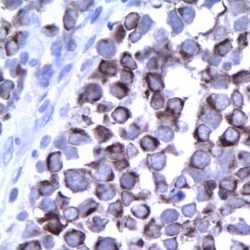
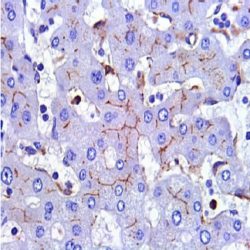
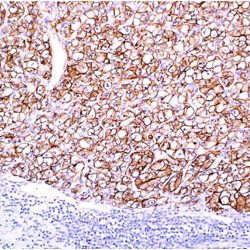
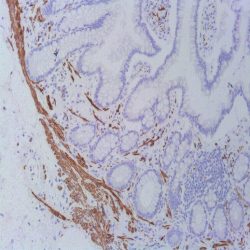
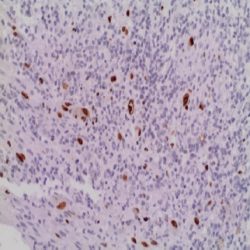
Reviews
There are no reviews yet.